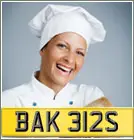A Tale of Two Agencies Navigating Changes in DVLA NI and DVLA UK
Reg Plates ArticleA Tale of Two Agencies Navigating Changes in DVLA NI and DVLA UK

The Driver and Vehicle Licensing Agency (DVLA) plays a crucial role in keeping Britain's roads moving. But did you know there are actually two DVLAs – one for Northern Ireland (DVLA NI) and another for Great Britain (DVLA UK)? While they share a similar purpose, recent changes have highlighted some key differences in their services. This article explores these developments, unpacking what they mean for drivers across the UK.
Digital Transformation Takes the Wheel
A major focus for both DVLAs has been digitalization. DVLA UK has seen significant progress in this area. In April 2024, they announced a major update to their Driver and Vehicle Account service. This online platform now allows users to:
Renew photocard driving licences: This high-volume transaction can now be completed entirely online, with users able to track their application and even choose their own photo.
Apply for a first provisional licence: Young drivers can ditch the paper forms and apply for their learner's permit digitally.
View and manage other details: Account holders can access their provisional licence details (if applicable), add registered vehicles, and potentially see information related to Driver Certificate of Professional Competence (CPC) for commercial drivers.
This shift towards online services aims to streamline the process for drivers and reduce reliance on traditional paper forms. It aligns with the DVLA UK's digital transformation plan, prioritizing user convenience and efficiency.
DVLA NI, however, hasn't implemented online licence renewals as of July 2024. Their website, nidirect, provides information on driver licensing but focuses on informing users about the traditional renewal process.
Licences: A Tale of Two Formats
Another key difference lies in the format of driving licences. DVLA UK licences have adopted a single plastic photocard format since June 2015. DVLA NI, however, maintains the two-part system with a plastic photocard and a paper counterpart. This difference can be inconvenient for drivers who frequently travel between Northern Ireland and Great Britain, as they may need to carry both parts of their licence depending on the jurisdiction.
While there haven't been official announcements about changes to the format in Northern Ireland, it's worth keeping an eye on future developments. The UK government's focus on streamlining processes might lead to a unified licence format across the nation in the coming years.
Beyond Licences: Other Service Variations
There are other areas where the DVLAs diverge. Here are a couple of noteworthy examples:
Change of Address: Both DVLAs require drivers to update their addresses, but the process differs slightly. DVLA UK allows online notification through their Driver and Vehicle Account service, whereas DVLA NI currently doesn't offer this option.
Driver Records: Currently, there's no centralized driver record system encompassing both Northern Ireland and Great Britain. This can be an inconvenience for drivers with licences from both regions, as they might need to interact with each DVLA separately for certain record-related matters.
The Road Ahead: Convergence or Continued Divergence?
The recent digital push by DVLA UK and the existing format differences between the two agencies raise questions about the future of driver licensing services in the UK. Here are some possibilities:
Full digitalization: DVLA NI might follow suit and introduce online licence renewals, potentially mirroring the system adopted by DVLA UK. This would create a more consistent user experience across the UK.
Standardized licences: A unified driving licence format for both Northern Ireland and Great Britain could be implemented, eliminating the need for drivers to carry separate documents depending on location.
Centralized driver records: A centralized system for managing driver records across the UK could be established, simplifying access to driving history and other relevant information for both drivers and relevant authorities.
Ultimately, the direction of these services will depend on government decisions and ongoing discussions between the two DVLAs.
Conclusion: Keeping Up-to-Date
The landscape of driver licensing services in the UK is constantly evolving. While some differences persist between DVLA NI and DVLA UK, the recent digital push by DVLA UK suggests a move towards a more streamlined and user-friendly experience. Staying informed about these changes, particularly through the official government websites of each agency.
This article has provided a snapshot of the current state of affairs and potential future directions. As the DVLAs continue to evolve, drivers across the UK can expect further improvements and potentially a more unified system in the years to come.
It all started back in 1991 when our love and obsession for private number plates was born.
Since then we have grown steadily over the years to become a leading light in the private number plate industry holding our own stock of high quality number plates and many thousands of registrations we are selling for trade and private clients including many celebrities and sports personalities.


- FREE TRANSFER SERVICE - your paperwork is handled by our trained team
- OVER 30 YEARS EXPERTISE - long established and trusted company
- DVLA RECOGNISED RESELLER - linked directly from the DVLA website
- TRADE ASSOCIATION MEMBERS - MIRAD and CN Guild members


